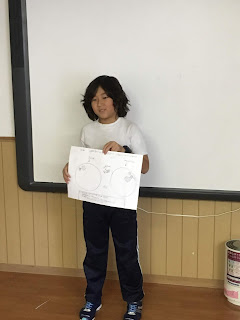As of last week we finished our unit on Where We are In Place and Time! It was a really fun unit, where we learned about human movement throughout our planet. Here was our focus:
Central Idea: Human migration is a response to challenges, risks, and opportunities.
Lines of Inquiry:
Causation - Causes for movement/migration
Perspective - Effects of movement/migration on communities
Connection - Connection between new and old lives of migrants.
To start we focused on the differences between migrants, immigrants, and refugees. It took a lot of research to help us understand the differences, but it was very important that we understand the differences, in order to help us with our final project. In the end we created a venn diagram to categorize and understand.

Finally, after all this preparation, we were ready to create our final assessment. For this final assessment we were given a lot of agency, as well as a lot of guidance. We were allowed to choose our own groups, and decide what our final product would look like. But we had to follow a long process and show what we were doing each step of the way, to make sure that we did not get too excited and not finish!
First, we had to brainstorm what we would make, and we had to make sure that it checked off each of the boxes on our checklist. For many of us, we had to do this several times before Ms. Hannah approved and said we could start to draft our final project. Side note - drafting is our word of the month! We are learning all about drafting...that may be a post for the future. Once we had finished the brainstorming, we drew pictures and wrote notes about everything we were going to do, so when we closed our eyes we could see EXACTLY what our final project would look like. Finally, after that was checked and approved, we could get down to work.
It took us about two weeks to put together our final assessments. Some of us finished sooner than others, and when that happened we worked with other groups to help them out. Here is a list of what all the groups made throughout their final assessments...
Once we had a basic understanding of the differences, we made KWL charts in our notebooks to help us think about what to research next.
Using what we put in our W's, we decided on a question we wanted to research, and we spent a few days looking it up, and learning something new, just for ourselves.Some of us did this with a partner, but most of us did it by ourselves. Once we had all finished researching, we made a poster, a drawing, or some google slides to present what we found to the class. In this way, we could all share and learn more, while also exploring our particular interest! After everyone presented, we put all our thinking onto the wall so we could remember what we had learned.

After our midway presentations, we started to read a book about two people - Nya and Salva - and their experiences living in Sudan and later South Sudan in 1985 and 2008. The book, called "A Long Walk to Water" and written by Linda Sue Park, is based on the real life story of Salva Dut, one of the many "Lost Boys" from Sudan's civil war in the late 80's and early 90's. We are actually still reading this story, because while it has taught us about migrants and refugees, and why they have to move as they do, it has also taught us about water and food as resources - something strongly connected to our next unit!
First, we had to brainstorm what we would make, and we had to make sure that it checked off each of the boxes on our checklist. For many of us, we had to do this several times before Ms. Hannah approved and said we could start to draft our final project. Side note - drafting is our word of the month! We are learning all about drafting...that may be a post for the future. Once we had finished the brainstorming, we drew pictures and wrote notes about everything we were going to do, so when we closed our eyes we could see EXACTLY what our final project would look like. Finally, after that was checked and approved, we could get down to work.
videos in English, Japanese, Korean, Tag-a-log, and Mandarin- Interviews in English, Urdu, and Hindi
- Pamphlets with information on charities and organizations that help Refugees
- Books with common questions and answers that new immigrants to Japan may have
- Google Slide presentations with information on immigrants, refugees, and migrants
- A collection of google videos to help us learn about our new unit
- and more!
Finally, after all our hard work, we presented to our classmates, as we had during our initial inquiry. We tried - and succeeded - in doing better presentations than our last time!
We had a great time, and learned lots, and we're all excited for our next unit - Sharing the Planet!





















